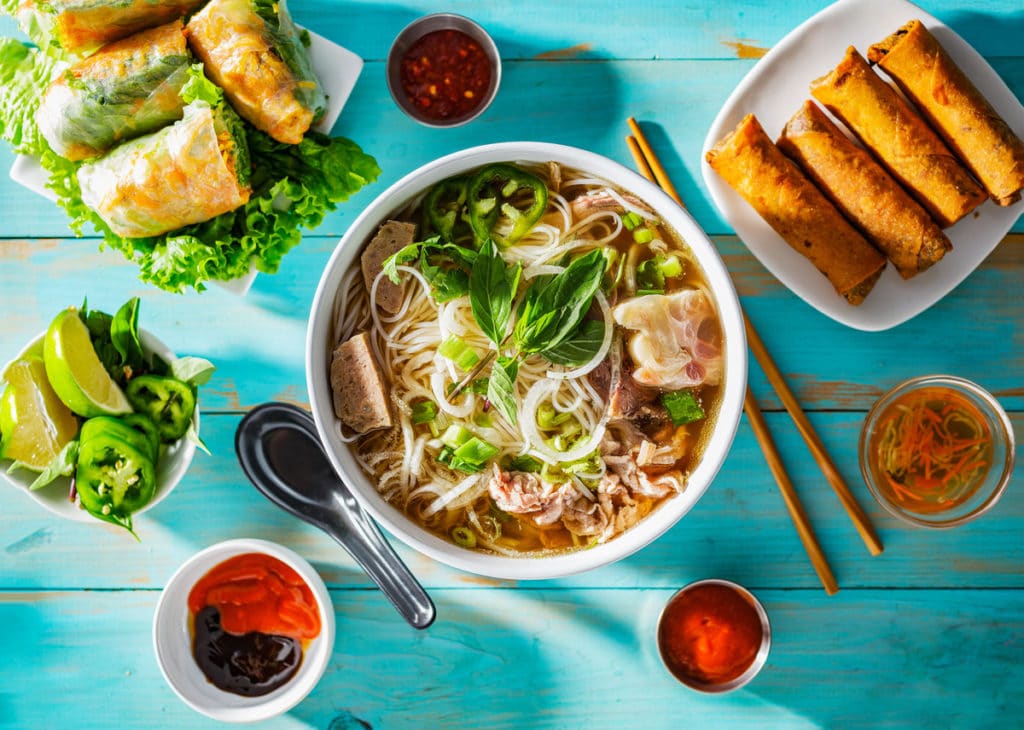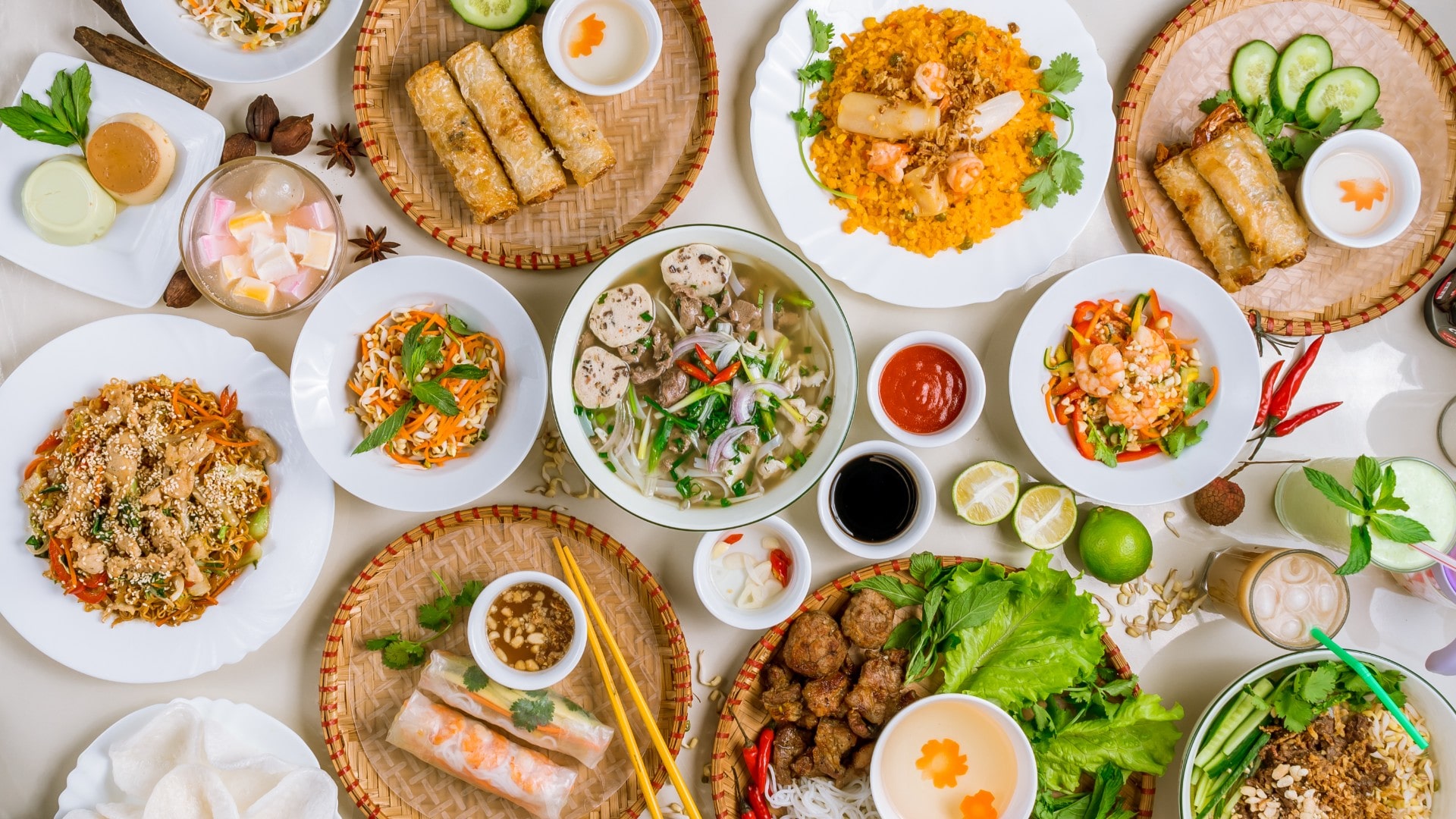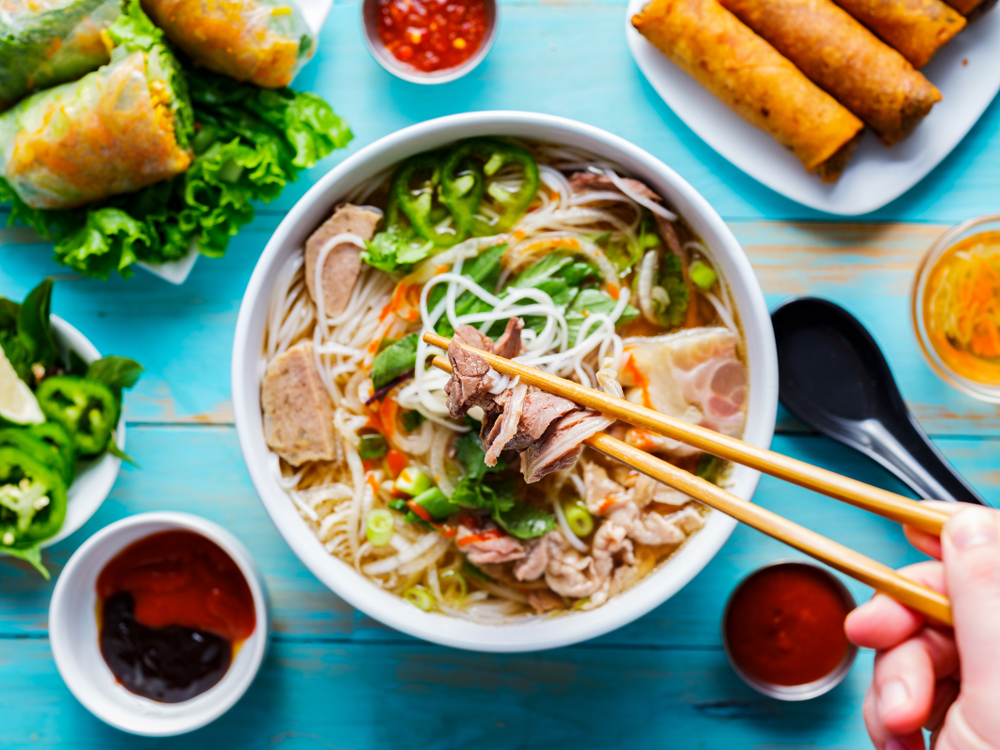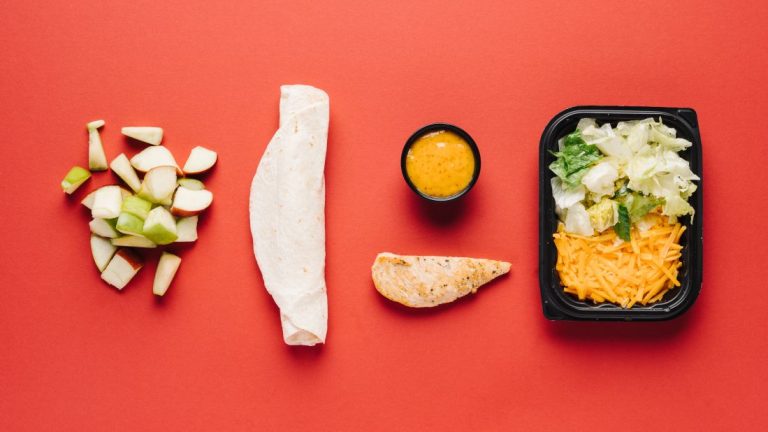
Exploring the Vibrant World of Healthy Vietnamese Food
Exploring the Vibrant World of Healthy Vietnamese Cuisine: A Guide to Nutritious and Delicious Dishes
Delving into the colorful tapestry of global gastronomy, Vietnamese cuisine has been steadily gaining traction for its unique flavors and health benefits. It is a culinary journey that harmoniously blends fresh herbs, vegetables, lean proteins, and whole grains, making it an ideal choice for those seeking both nutrition and taste. This blog post serves as your passport to the world of healthy Vietnamese food, where we will uncover dishes that not only tantalize your taste buds but also nourish your body.
The Foundations of Vietnamese Cooking
At the heart of Vietnamese cooking lies a deep respect for fresh ingredients and minimal intervention in their preparation. The kitchen is brimming with herbs like basil, mint, and cilantro, which not only infuse dishes with vibrant flavor profiles but also offer a myriad of medicinal properties. For instance, the soulful pho broth – a cornerstone of Vietnamese cuisine – is simmered for hours to extract nutrients from bones, resulting in a flavorful base rich in collagen and minerals.
Furthermore, rice takes center stage as a staple food in Vietnam, though healthier alternatives such as brown rice or rice flour noodles are increasingly popular for their fiber and nutrient content. These foundational elements set the stage for nutritious and delicious meals that are quintessentially Vietnamese.
Signature Healthy Vietnamese Dishes
1. Pho
This iconic noodle soup dish epitomizes the essence of Vietnamese cuisine, combining tender slices of lean beef or chicken with a nutrient-dense broth teeming with aromatic spices. Garnished with an array of fresh herbs, bean sprouts, and lime wedges, pho offers a complete meal packed with protein, vitamins, and antioxidants.
2. Gỏi (Salads)
Delve into the refreshing realm of Vietnamese salads that burst with color and crunch. From the beloved Gỏi cuốn (Spring Rolls) filled with raw veggies and shrimp or tofu to the zesty Gỏi gà (Vietnamese Chicken Salad), these dishes showcase how lightly cooked or raw vegetables can be transformed into hearty, low-calorie meals when paired with lean protein sources.
3. Bánh Mì
Elevate this classic sandwich by swapping white bread for whole grain, grilling meats instead of frying. And loading up on crisp veggies like cucumber, carrot, and radish. The bánh mì becomes a satisfying yet balanced lunch option, providing complex carbohydrates, protein, and fiber all in one bite.
4. Bún Chay (Vegetarian Vermicelli Bowl)
Dive into a bowl of chilled vermicelli noodles topped with pan-seared tofu or seitan, a medley of raw and pickled vegetables, and a light, umami-packed sauce. This plant-based delight demonstrates how vegetarian options can be both filling and full of flavor.
5. Canh (Soups)
Experience the warmth and comfort of traditional soups like Canh chua (Sweet and Sour Soup) or Canh ga chay (Vegetarian Chicken Soup). Overflowing with seasonal vegetables and either plant-based or lean animal proteins, these soups provide sustenance while being easy on the waistline.
Snacks and Beverages
For lighter moments, indulge in delectable Vietnamese snacks that keep calories in check without compromising taste. Summer rolls wrapped in translucent rice paper or steamed dumplingst filled with minced pork or shrimp make for delightful appetizers. Additionally, Vietnam’s tropical climate offers a bounty of fresh fruits that double as healthy snacks or dessert options.
Traditional beverages, too, reflect a commitment to wellness. Herbal teas made from local ingredients, coconut water straight from the source, and freshly squeezed fruit juices hydrate and refresh, often packing a nutritional punch.
Vietnamese Herbs and Spices for Health
Healthy vietnamese food:A treasure trove of healing properties, Vietnamese herbs play pivotal roles in the nation’s cuisine and medicine. Basil aids digestion, mint cools the palate, and cilantro contains antioxidants – each herb adding depth to dishes and health benefits to diets. Furthermore, spices like ginger, turmeric, and chili peppers bring anti-inflammatory properties and immune-boosting effects to the table alongside their bold flavors.
Tips for Making Vietnamese Food Healthier
To adapt Vietnamese recipes for even healthier eating habits, consider these strategies:
- Swap deep-fried items for grilled or steamed versions to reduce fat content without sacrificing texture.
- Mindfully moderate sodium intake by using fish sauce, soy sauce, and salt judiciously, while enhancing flavors with herbs and spices.
- Incorporate more plant-based meals into your weekly diet by exploring meatless variations of classic dishes, such as vegetable-only pho or tofu-laden bánh xèo.
Exploring the Advantages of Healthy Vietnamese Cuisine
Advantages of Healthy Vietnamese Food:
Nutrient-Dense Ingredients
Vietnamese cuisine emphasizes fresh, whole foods like leafy greens, herbs, and vegetables that are rich in vitamins, minerals, antioxidants, and fiber. These nutrient-packed ingredients form the foundation of many dishes, promoting overall health and a strong immune system.
Balanced Macronutrients
The meals often feature a harmonious blend of carbohydrates from rice or noodles, lean proteins from fish, poultry, or tofu, and healthy fats from sources such as peanuts or sesame seeds. This balance ensures sustained energy levels and supports weight management.
Low in Processed Foods
Traditional Vietnamese food is largely unprocessed, reducing the intake of artificial additives, excess sodium, and unhealthy fats. Many dishes are cooked using minimal oil and no preservatives, promoting heart health.
Herbal Medicinal Properties
Vietnamese cuisine incorporates a variety of herbs like lemongrass, mint, basil, and coriander, which have been shown to possess medicinal properties. They can aid digestion, reduce inflammation, and even help manage certain health conditions.
Fish Sauce and Fermented Foods
Fish sauce, a staple in Vietnamese cooking, is a natural source of glutamic acid (umami), providing flavor without added salt. Fermented foods like pickled vegetables and nuoc cham dipping sauce contribute probiotics for gut health.
Portion Control
Vietnamese meals tend to be portioned in a way that encourages moderation. Small servings of meat are typically complemented with large amounts of vegetables and rice, promoting satiety without overconsumption of calories.
Conclusion
In summary, the world of healthy Vietnamese food is a treasure trove of nutritionally dense and incredibly flavorful dishes. By embracing the principles of freshness, balance, and minimal processing, Vietnamese cuisine proves that healthy eating need not be bland or boring.
As you embark on this culinary adventure, remember that each dish tells a story of tradition, health, and the joy of shared meals. Embracing Vietnamese food not only enriches your palette but also contributes to a healthier lifestyle, one delicious meal at a time. So why wait? Roll up your sleeves, grab a wok, and let the flavors of Vietnam invigorate your plate and your well-being!





